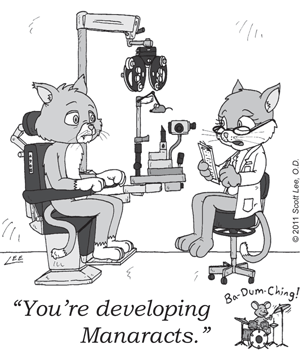Abuse Affects Us All
Abuse is an issue that all health care practitioners must be aware of. When abuse is reported or suspected, and contusions may be present, documentation is essential. The practitioner should be familiar with bruising, causes of bruising (including non abuse), if lesions are consistent with the patient’s/patient representative’s story(ies), reporting protocols, and available imaging techniques.
Clinical manifestations of abuse may include many systems. The eye care practitioner may encounter ocular signs of trauma (which may be associated with abuse), which include hyphema, orbital fracture, blowout fracture, entrapment, Purtscher’s retinopathy, shaken impact injury (formerly referred to as shaken baby syndrome) and traumatic brain injury.
We may also observe cutaneous contusions of the face, arms and neck (areas typically exposed during an exam). Fortunately, optometrists have fairly inexpensive and readily available methods of imaging (and therefore documenting) these contusions. The techniques include the use of infrared digital imaging through cosmetic cover, visible digital imaging, imaging under the Wood’s lamp, imaging with 390nm torch with and without yellow filter, and image enhancement via digital contrast manipulation. Of the ultraviolet techniques, we found the 390nm illumination coupled with the yellow filter provided more distinct imaging than the 365nm Wood’s lamp.
Sight Gags by Scott Lee, O.D.

A potential method for imaging contusions clinically: An ophthalmic optical coherence topography unit (OCT) can be set in anterior segment mode to image the area of bruising. Currently, ophthalmic OCT can only penetrate skin approximately 2mm, so it does not yet have the penetration or practicality that is needed to do the job.
Observation is one of the skills the practitioner must have. But once we observe, often we must act. Abuse is one of those topics that optometrists (as well as other health care practitioners) are hesitant to address, despite local laws that require us to report suspected abuse.
For more on this topic, we would like to point your readers to an article we wrote, “Clinical Detection and Imaging of Contusions in Suspected Physical Abuse,” in the winter 2011 issue of The Forensic Examiner.
—Eugene R. Bertolli, O.D.,
Clifford D. Brown, O.D., M.P.H., Capt. USPHS,
Dominic R. Pannone, O.D.,
Thaddeus W. Bartles, O.D.
To send a Letter to the Editor, e-mail Amy Hellem, editor-in-chief,
ahellem@jobson.com, with “Letter to the Editor” as the subject line.

